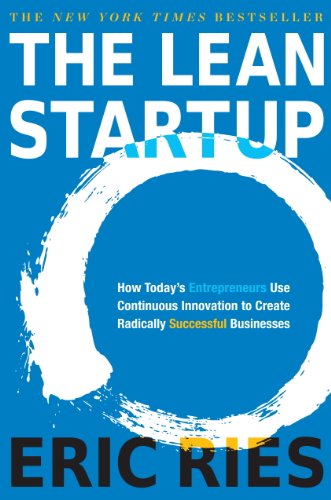

This article is an excerpt from the Shortform summary of "The Lean Startup" by Eric Ries. Shortform has the world's best summaries of books you should be reading.
Like this article? Sign up for a free trial here .
The Lean Startup uses the term “Validated Learning.” What does this mean? How does it differ from normal learning, and what does the “validated” mean?
Learn from Eric Ries how to conduct validated learning in your startup.
What Is Validated Learning?
Remember from earlier in The Lean Startup summary that a startup is trying to build a new product or service in conditions of extreme uncertainty. There are a lot of things you know that you don’t know, and a lot of things you don’t know that you don’t know.
Therefore, a startup’s most important function is learning – in particular, learning what the customers really want and what will lead to a sustainable business.
But you need to approach learning with discipline, what Eric Ries calls “validated learning” in The Lean Startup.
Bad, unvalidated learning is executing a plan without much prior thought, seeing it work or fail, and giving a post-hoc rationalization. (Well of course X didn’t work, that means we should do Y!)
Validated learning is having testable hypotheses about the world, designing experiments to test those hypotheses, and analyzing the data to evaluate your hypotheses. You have real, quantitative data to show what you have learned.
Validated Learning Anecdote: IMVU
(This is a particularly long anecdote, but stay with me – we’ll loop back onto IMVU throughout the book, and what follows here is one of the most critical lessons).
In 2004, Eric Ries and his co-founders at IMVU wanted to build a social network around instant messaging (IM), which seemed attractive for its network effects – the more people who join, the more valuable the network is, which makes even more people join.
Because of network effects, the top IM products owned the vast majority of the industry. It was commonly accepted, almost obvious, that it’d be extremely difficult to make a new IM network succeed. If you’re already on a network with all your friends, you don’t want to switch to a new network without all your friends joining too. Think about how hard it’d be to build a rival to Facebook today – how would you get Facebook users to join your network when all their friends are on Facebook?
To avoid this problem, IMVU decided not to start their own new IM network. Instead, they built a new 3D video game layer on top of IM networks. Users would first join IMVU, a 3D virtual world where they could create avatars and buy virtual goods. Then they would connect their IM accounts and message people on their existing IM networks to join IMVU too. Critically, this meant users wouldn’t have to switch to a whole new IM network – it already works with the IM networks they belong to. Ingenious!
The IMVU team labored for 6 months on their prototype product. They worried constantly about details of their strategy – “how many IM networks should we support?” (over a dozen) “How buggy can the prototype be? Will it make us look bad?”
They didn’t conduct validated learning. They didn’t focus on what people actually wanted – they built what they thought users wanted.
Finally, with their pride on the line, IMVU launched the product.
And no one joined.
They thought it was a quality problem at first, so they worked on fixing bugs and adding features. This didn’t budge the needle.
The Validated Learning Begins
Finally, they decided to bring in potential users for interviews. This is where their epiphany around validated learning happened. IMVU built the whole game around getting new users to bring in their friends from other IM networks. But users didn’t actually want to invite their friends over before they had a chance to really test it out – if the game was uncool, they’d look bad.
Even more importantly, IMVU found through validated learning that users actually didn’t mind joining a new IM network. Just like people today have different lives on different social networks (Facebook, Twitter, LinkedIn, Instagram, Pinterest, etc.), IMVU found that their target customer wanted a separate IM network dedicated to this new virtual world. They wanted to make new friends, not bring their existing friends over.
When Eric and his team realized this, they threw away almost a year of hard work. But when they built a product that their customers actually wanted, they started getting real traction. This is the power of validated learning.
Imagine if they’d interviewed users at the start. They could have saved themselves a lot of pain and time. This Lean Startup summary is going to teach you how to avoid mistakes like this.
This story represents the critical lesson of Lean Startup and the point of
validated learning – if you don’t understand what your customer actually wants, you’ll waste a lot of time building something no one will buy. This will be painful, and the more time you spend on this, the harder it’ll be to throw it all away.
Put more proactively – how could IMVU have learned what customers wanted earlier, without 6 months of hard engineering? Did they really need to support a dozen IM clients at launch? Probably not – even connecting just one IM network could have led to the same conclusion, and it would have taken a lot less work.
But what if they had tried something even more extreme – what if they pretended to have a working product on their website with a download button, and they measured what users actually wanted by download clicks?
Eric’s experience running IMVU was the inspiration for Lean Startup. The rest of this Lean Startup summary teaches a method for you to avoid what IMVU did…
———End of Preview———

Like what you just read? Read the rest of the world's best summary of "The Lean Startup" at Shortform . Learn the book's critical concepts in 20 minutes or less .
Here's what you'll find in our full The Lean Startup summary :
- How to create a winning Minimum Viable Product
- How to understand how your startup will grow
- The critical metrics you need to track to make sure your startup is thriving






